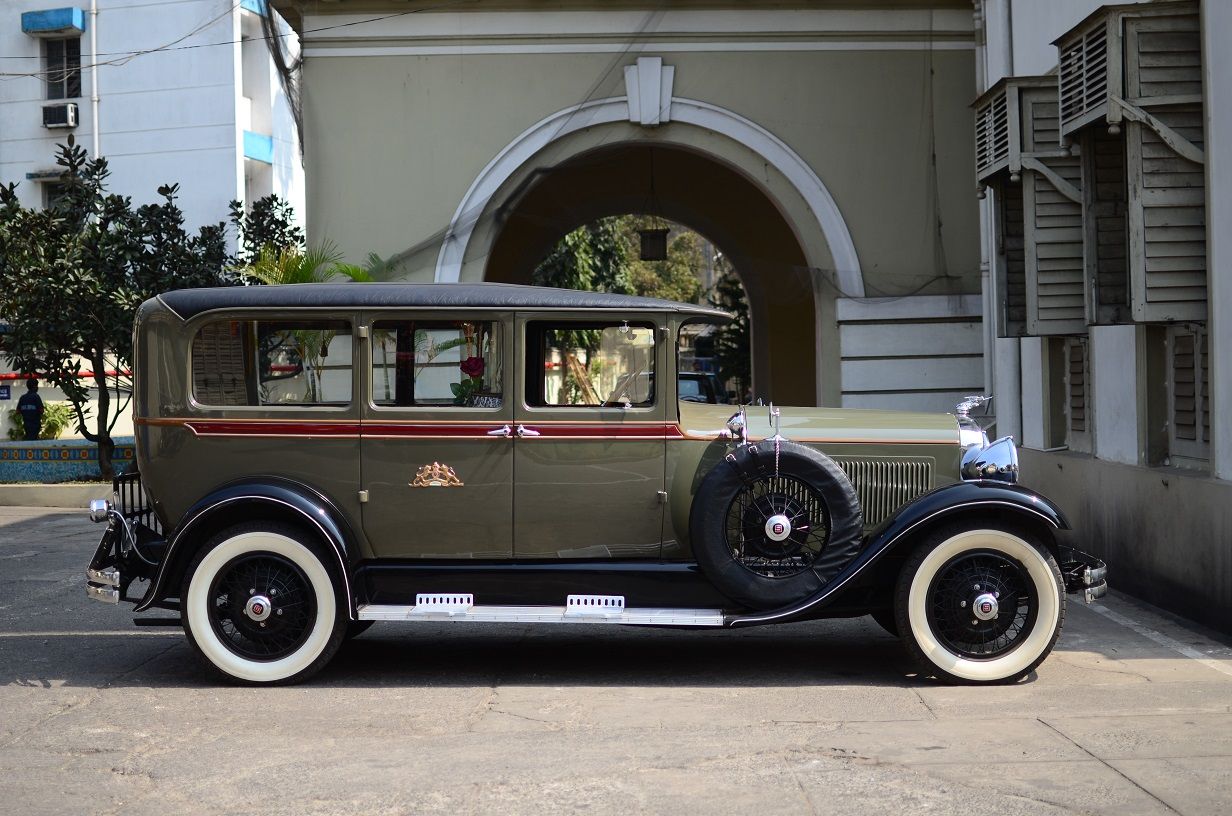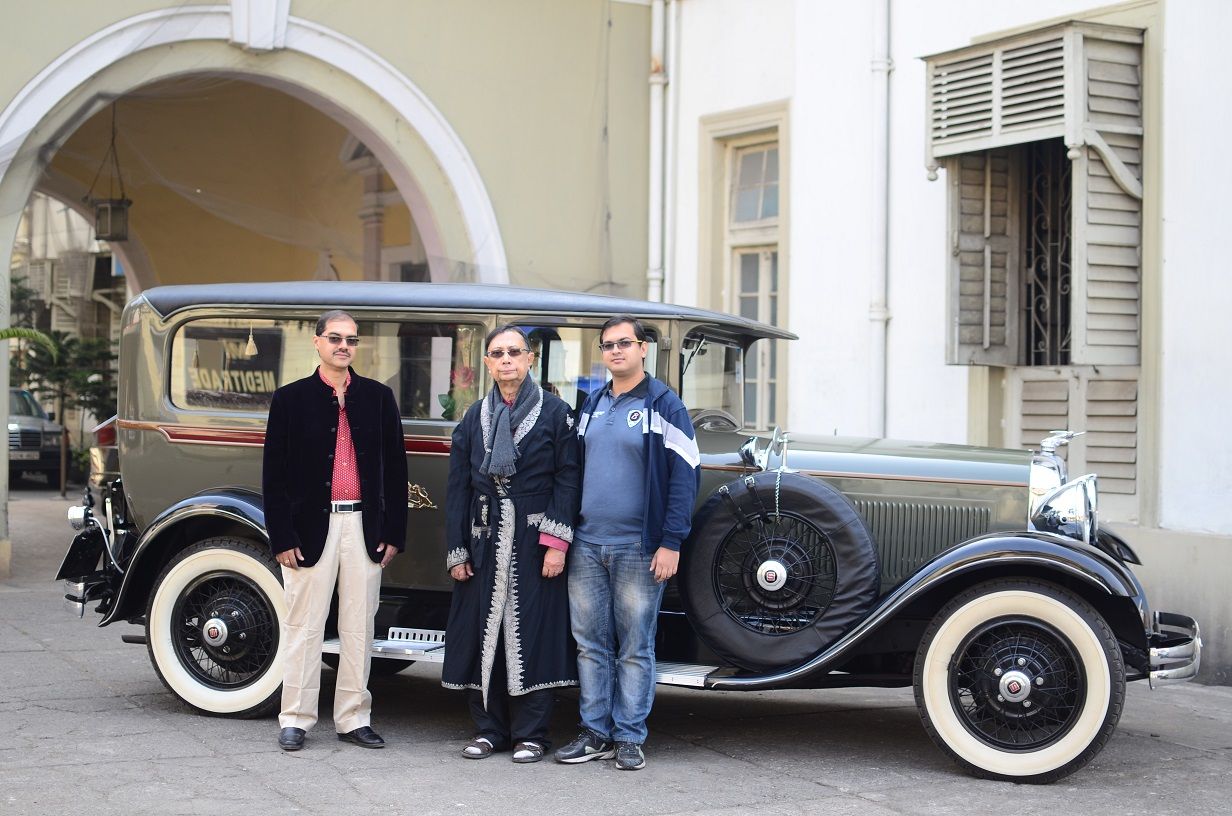1928 Studebaker President: A Royal Family Heirloom
Images: Shreya Goswami
This beautifully restored car has a remarkable history. It was sent by Studebaker to India as a demonstrator to perhaps attract and wean away the rajas and the maharajas off their staple Rolls-Royces. One raja, Kamalaranjan Roy, the Raja of Cossimbazar (some 230km from Kolkata) was very much taken by the car, and managed to acquire it. Since then, the car has remained in the family, passed down through generations, and preserved in a fairly decent state of conservation, with an occasional repaint.

One of the older American carmakers, Studebaker had a storied history. Starting with horse carriages in 1852, Studebaker migrated to car-making in 1902, initially making electric cars before moving to petrol-engine automobiles, starting 1904. For the next six decades, Studebaker built up an enviable reputation for quality and reliability.

During the First World War Studebaker profited handsomely from orders received by the British government, as well as those from France and Russia, supplying transport wagons and artillery harnesses and saddles. Into the 1920s, Studebaker launched a line of commercial vehicles too, and both, the trucks, and the cars, were powered by the same six-cylinder engine.

Until 1926 Studebaker’s flagship model was the Big Six. The Big Six was replaced by the President, which was unveiled on June 23, 1926. Powered by a 5.8-litres in-line six, the first President was soon replaced, in January 1928, by a smaller engine car, but a straight eight. The ambitious president of Studebaker, Albert Russel Erskine, wanted to build the “the finest eight-cylinder car in the world regardless of cost.”

Erskine ordered Barney Roos, the head of Studebaker’s engine design department to develop the engine. Roos designed a 5.1-litres (313 cubic inches) L-head engine, featuring an inline side-valve design with five main bearings and a compression ratio of 4.7:1, and producing a maximum of 100 horsepower, ten more than Cadillac’s larger V8.

Exceptionally efficient for its time, the President with the new eight-cylinder engine established several land-speed records between 1928 and 1933, some of which remained unbeaten for decades.




Around mid-June 1928, four Presidents covered 30,000 miles (48,280km) in 19 days, with the two roadsters averaging 110 km/h and the two saloons doing 96.6 km/h. Later two other Presidents established another record: that of driving for 24 hours, at an average speed of 136.85 km/h. By the end of 1928, Studebaker Presidents had established a total of 114 records for production cars!

Not only was the President powerful and quick for its time, it was also very well appointed, featuring two-tone broadcloth upholstery, upholstered arm rests, Wilton carpets, window mouldings, and walnut-grained dashboard. Standard equipment included an eight-day clock, a dashboard thermometer, and an electric fuel gauge. The eight was available on the longer 3.33 meters wheelbase FA chassis and the shorter 3.07 meters FB version. With attractive styling and luxurious interiors, the President was a veritable success: more than 16,500 cars were sold in 1928. Halfway through 1928, the engine was enlarged, to 5.5-litres (337 cubic inches).

Andrew Beckman, the archivist at the Studebaker National Museum, in South Bend, Indiana, confirms that the car we are featuring “is an early model with the 313 cubic inch engine. Approximately 8,000 FA Presidents with the 313 engine (in all body styles) were built.” In fact, this car, with the body number of FAM 118 “indicates that it is the 118th body of that style,” says Beckman. The body style is that of a 7-passenger limousine.

The raja’s grandson, Pallab Roy, decided to restore the car in 2012, and four years later, this rare and perhaps unique limousine has been brought back to a fabulous, almost new state, with everything either restored or replaced with original parts sourced from all over, amongst which is an electrically operated Autofone that connects the passengers’ cabin to that of the driver’s!

Comments
Sign in or become a deRivaz & Ives member to join the conversation.
Just enter your email below to get a log in link.
